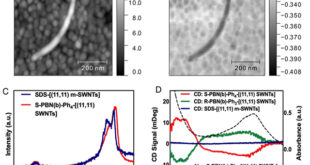Aysar T. Jarullah, Iqbal M. Mujtaba, Alastair S. Wood
Chemical Engineering Science Volume 66, Issue 5, 1 March 2011, Pages 859-871
Abstract
Hydrodesulfurization (HDS) of crude oil has not been reported widely in the literature and it is one of the most challenging tasks in the petroleum refining industry. In order to obtain useful models for HDS process that can be confidently applied to reactor design, operation and control, the accurate estimation of kinetic parameters of the relevant reaction scheme are required. In this work, an optimization technique is used in order to obtain the best values of kinetic parameters in trickle-bed reactor (TBR) process used for hydrodesulfurization (HDS) of crude oil based on pilot plant experiment. The optimization technique is based on minimization of the sum of the square errors (SSE) between the experimental and predicted concentrations of sulfur compound in the products using two approaches (linear (LN) and non-linear (NLN) regressions).
A set of experiments were carried out in a continuous flow isothermal trickle-bed reactor using crude oil as a feedstock and the commercial cobalt–molybdenum on alumina (Co–Mo/α-Al2O3) as a catalyst. The reactor temperature was varied from 335 to 400 °C, the hydrogen pressure from 4 to 10 MPa and the liquid hourly space velocity (LHSV) from 0.5 to 1.5 h−1, keeping constant hydrogen to oil ratio (H2/oil) at 250 L/L.
A steady-state heterogeneous model is developed based on two-film theory, which includes mass transfer phenomena in addition to many correlations for estimating physiochemical properties of the compounds. The hydrodesulfurization reaction is described by Langmuir–Hinshelwood kinetics. gPROMS software is employed for modelling, parameter estimation and simulation of hydrodesulfurization of crude oil in this work. The model simulations results were found to agree well with the experiments carried out in a wide range of the studied operating conditions. Following the parameter estimation, the model is used to predict the concentration profiles of hydrogen, hydrogen sulfide and sulfur along the catalyst bed length in gas, liquid and solid phase, which provides further insight of the process.
Go to Journal
 Advances in Engineering Advances in Engineering features breaking research judged by Advances in Engineering advisory team to be of key importance in the Engineering field. Papers are selected from over 10,000 published each week from most peer reviewed journals.
Advances in Engineering Advances in Engineering features breaking research judged by Advances in Engineering advisory team to be of key importance in the Engineering field. Papers are selected from over 10,000 published each week from most peer reviewed journals.

